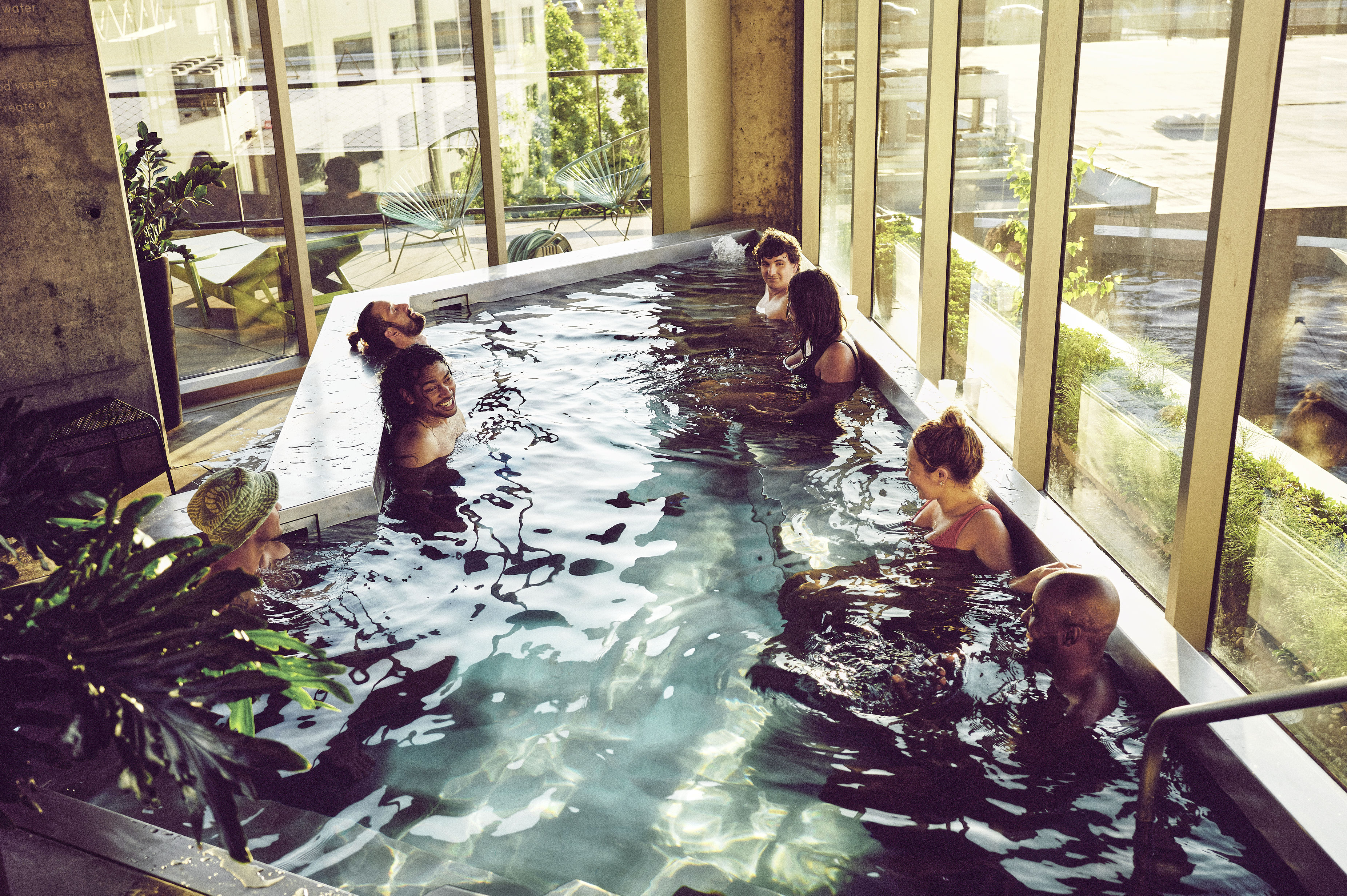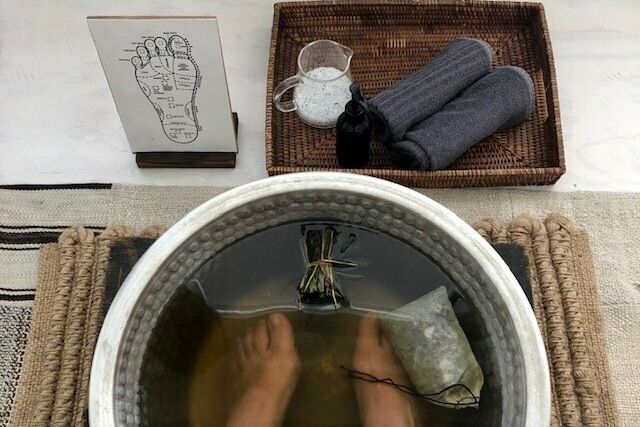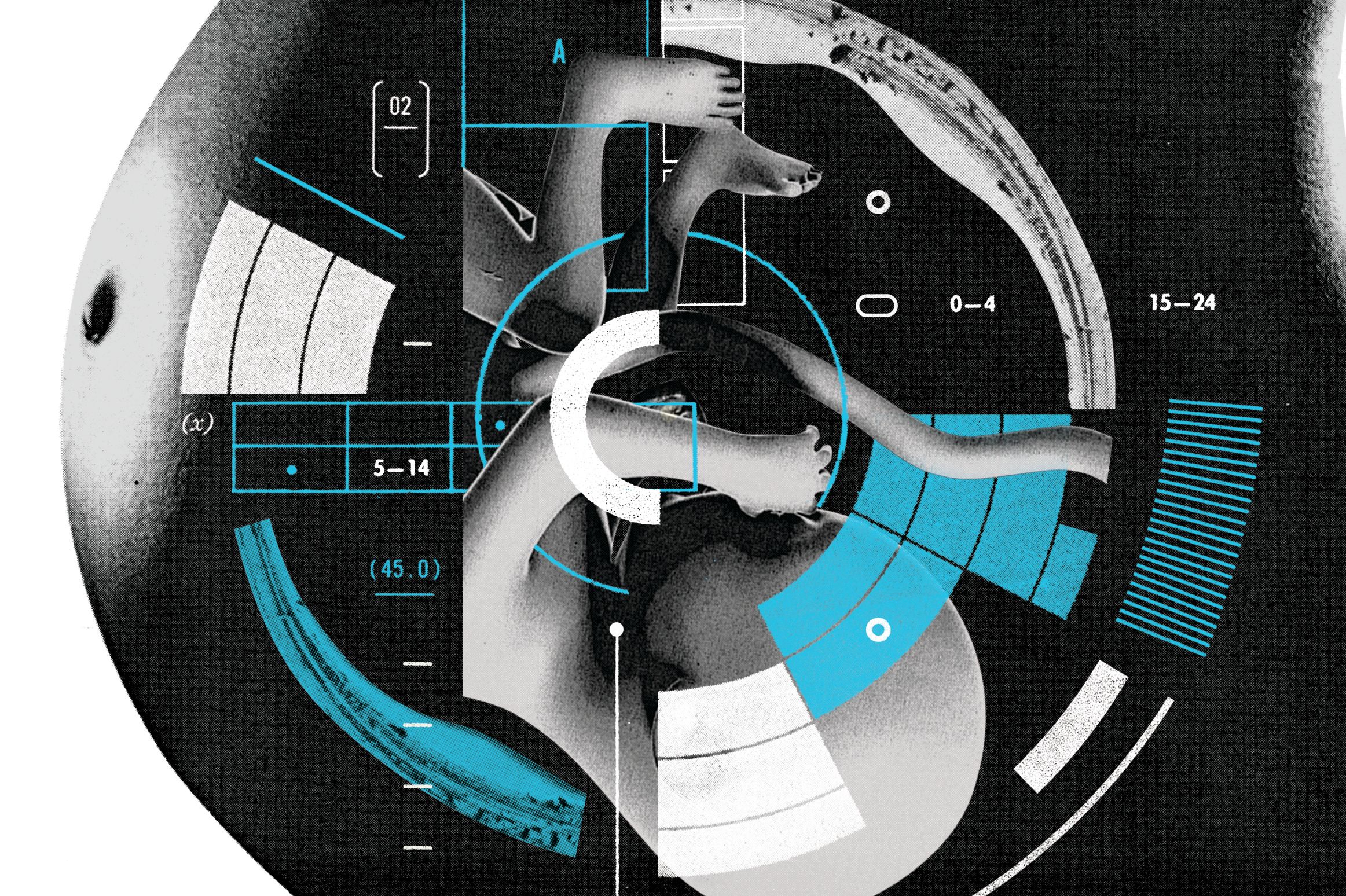
How Portland Helps the World’s LGBT Couples Have Babies
There are many ways to start a family.
For Isaac Hohaia and Jiayi Wu, family began on January 11, 2016, when they were stuck in some harrowing Portland traffic. It was a Sunday—traffic on a Sunday—and doctors treating the woman bearing the couple’s child chose to induce labor. Isaac and Jiayi had spent most of the day pacing in their hotel room. Now, they sat helplessly in their rental car on I-84, their eyes boring into the bumper in front of them, as if they intended to stare a clear path into existence. They had no way to call the hospital, or anyone at all.
“We don’t have a US number,” Isaac, 36, explains in a warm New Zealander drawl. “We had been using iMessage to video call, which needs Wi-Fi to keep it going.”
Several days earlier, the couple had flown to Portland from their home in Derby, a tiny, tropical hamlet with fewer than 5,000 people on the northwestern edge of Australia, to see out the final stages of the pregnancy. Jiayi, 32, an account manager from Shanghai, met Isaac, a general practitioner, through mutual friends while working in Isaac’s native New Zealand in 2008. They began dating, and the next year, when Isaac got a job offer in Australia, their relationship, as these things often go, took a more serious turn. Jiayi moved with him, and the rest was history, as they say—except that the couple always envisioned another chapter.
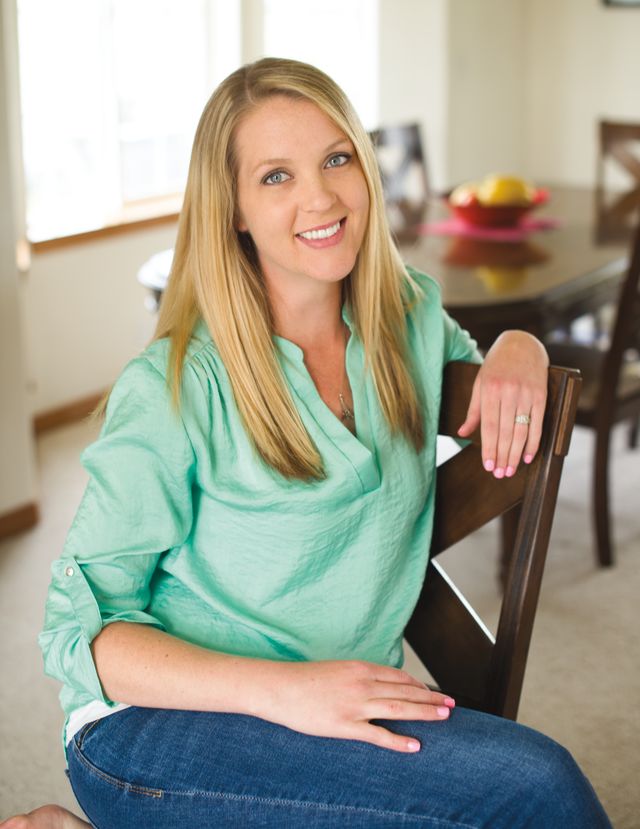
Surrogate mother Veronica Bowers
Image: Erica J. Mitchell
“We’ve been talking about having our own kids, kind of right from the start,” Jiayi says.
Now, a Portland woman named Letitia was giving birth to their child—a baby created through a modern-day orchestration of human biology, medical science, and social change, not to mention Isaac’s sister’s eggs and Jiayi’s sperm. Over the past two years, the couple had flown from Derby to Portland three times to visit Letitia and her son, have dinner with her friends, and even meet her boss. Meanwhile, they stayed in close touch. (Skype, as it turns out, is arguably the most important tool in international family planning.)
Almost an hour after Letitia began her labor, Isaac and Jiayi made it to Legacy Mount Hood Medical Center, where doctors ushered them into the room. “Everyone was expecting us,” Jiayi says, his Chinese accent almost imperceptible. “Letitia did about three or four pushes, and Dashell was born. I cut the cord and Isaac did the skin to skin.”
“We wanted an old-fashioned name,” adds Isaac. “They’re quite popular in Australia.”
Oregon Reproductive Medicine is housed in a stark white, three-story box in Goose Hollow. A tour inside is a study in contrasts: white walls, polished floors, and gleaming surfaces. Lab-coated embryologists work in vibration-proof labs, only viewable behind thick glass. Perfume and the smell of cigarette smoke on clothes are strictly prohibited. It’s an environment in which you can readily imagine someone trailing behind you to sanitize every surface you touch.
And yet ORM is also an emotional place, where dreams of having children are realized (mostly) and dashed (rarely), where people come to feel reassured, where men and women and couples start families. There is no sanitizer for the messy hopes of humans, and this high-tech environment is ultimately engineered to fulfill them.
“Sometimes people ask me, how many babies have you made?” says Elizabeth Barbieri, a reproductive endocrinologist at ORM since 2009. “The biggest underlying fear is that we’re going to tell them they can’t have a baby. Some patients voice that, and some patients hint at that. But there are very few circumstances where it’s not going to work.”
Oregon Reproductive Medicine was founded in 1989, for years functioning in an annex building to Legacy Good Samaritan in Northwest Portland. Last fall, the clinic opened this brand-new 25,000-square-foot facility to handle its patients and provide more state-of-the-art lab work. A team of about 100 employees—including four primary doctors, six embryologists, two geneticists, and contract acupuncturists—sees an undisclosed number of patients every year.
For Isaac and Jiayi, ORM was a one-stop shop. The clinic found Letitia through a surrogacy agency, collected about a dozen eggs from Isaac’s sister, fertilized them in the lab, and implanted. They lost the first “cycle” in a miscarriage, a common risk after implantation, but the second cycle worked. (The clinic freezes multiple fertilized embryos for just such a situation.)
“We were pretty anxious,” explains Isaac. “We are self-funded for the whole of it. We don’t have access to insurance to cover this in Australia. There’s a lot of financial risk.”
The fact that Isaac and Jiayi ended up at this particular fertility clinic in Portland, 8,000 miles from their home, at a total cost of $65,000, is not an accident. ORM’s 90 percent live-birth success rate ranks highest in the state, and in the top five among fertility clinics in the United States. And the United States, due to the growing acceptance of homosexuality and a relatively open-minded legal stance on surrogacy, has become a haven of sorts for international LGBT family planning. (Thirty-three states allow surrogacy.) ORM thus attracts same-sex couples and others who have exhausted their options for having children elsewhere.
While ORM’s patient base includes people seeking treatment for many reasons—from couples having difficulty conceiving on their own to women freezing eggs for a future pregnancy—today about 16 percent are international couples, from more than 40 countries. ORM participates in a traveling seminar called Men Having Babies to educate (and advertise to) singles and gay couples thinking about taking the plunge.
In many countries, like France, Germany, and Italy, surrogacy is outright illegal. In others, only “altruistic” surrogacy is permitted, meaning surrogates cannot be paid or compensated to carry a baby. In still other places (Poland and Greece, for example), commercial surrogacy is allowed, but the birth mother must have all the rights the intended parents do, meaning she remains involved until the child reaches 18.
This kind of legal complexity makes Portland an attractive (if logistically difficult) destination even for couples from relatively progressive places. “We’re from a small country town,” says Isaac. “But rather than it being kind of a redneck small town, everyone is very open and supportive. We had a baby shower and pretty much the whole town came. Altruistic surrogacy is legal in Australia but not commercial surrogacy—so only if someone does it from the goodness of their heart and nothing else.” The couple researched their options in India, Nepal, Thailand, and Mexico before deciding to come to Portland. “Only the USA really had the legal mechanisms to have both parents on the birth certificate, so that our rights of a parent were confirmed.”
Again, there are lots of ways to make a family.
For McMinnville mom Veronica Bowers, now 31, who already had two kids, a new path to motherhood began in 2013 as she sat with her husband, James, Skyping with Bruno and Christophe, two strangers from Paris. (See? Skype!) That first conversation, which would eventually lead to Veronica giving birth to twin girls, was captured by a French film crew for a documentary called Deux hommes et un couffin. (American film Three Men and a Baby was based on a French comedy called Trois hommes et un couffin, which translates to “Three Men and a Cradle.”) It is, predictably, as awkward as it is sweet.
“Hello!” say a visibly nervous Bruno and Christophe, smiling from ear to ear.
“Hi!” Veronica and James wave back. “You guys look great! So nice to meet you guys.”
“Christophe just wants to explain that he doesn’t speak English very well, so ... ,” Bruno trails off, searching for a word.
“My French isn’t very good either, so it’s OK, Christophe,” answers Veronica.
Veronica had decided she wanted to be a surrogate only a few months before, when, after she had put her children to bed, she watched a documentary called Little Man on Netflix: the tale of a lesbian couple in their 40s who couldn’t carry a child and decided to use a surrogate. The surrogate lied about her age (she was 39) and past health, and their son was born 100 days early, weighing under a pound.
“It tore this family apart,” says Veronica. “I’m sitting there crying. My husband’s like, 'What are you doing?’ I said, 'I just watched this documentary. And I could do that. I have great pregnancies.’”
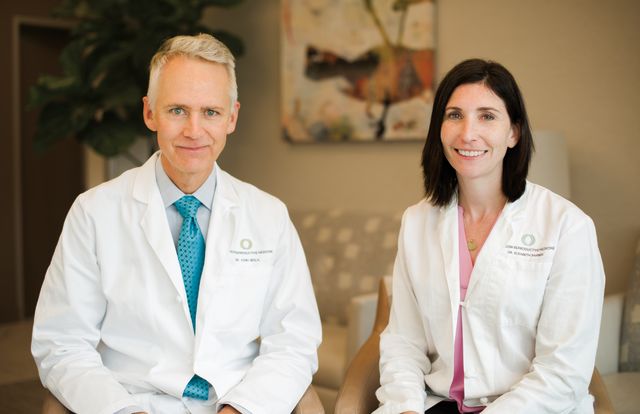
Dr. John Hesla and Dr. Elizabeth Barbieri of Oregon Reproductive Medicine
Image: Erica J. Mitchell
After several long talks, the couple decided to go for it. The Northwest Surrogacy Center, a multistate agency that finds suitable carriers for ORM patients, invited them in for a psychological interview and a medical screening for Veronica, which she passed quickly. Within weeks, the agency called to say they had a couple they thought would be a good match.
“I was looking for a male gay couple,” she says. “Because I’m a super type-A female, I know that my personality would probably be overbearing for a woman, especially for a woman going through egg retrieval and on the same hormones I’m on. I could see maybe us butting heads.”
Relationships between surrogates and future parents can get sticky. Yes, it’s a business transaction—surrogates can negotiate compensation between $25,000 and $68,000, with a bonus for a second pregnancy. But it’s also an inherently intimate and vulnerable relationship, requiring open and constant feedback. (“There’s a very detailed contract,” says Veronica. “I raised the dollar amount for having a nanny, but I got rid of the compensation for breast milk and maternity clothes because I had all the clothes I needed.”) Surrogates waive their legal rights to the children they bear, but can still be actively involved in their lives in ways the contract doesn’t cover. The Bowers family has already visited Bruno, Christophe, and the twins in Paris, while Isaac and Jiayi, who became close friends with Letitia over the course of her pregnancy, know that their bond might not last.
“We’re happy with what’s healthy for her,” says Isaac. “If she feels like she’s getting too attached [to Dashell] and wants to distance herself, we’re happy with that, too. At the start she said she’d be happy to maintain contact with a Christmas card.”
As this article was in the works, Veronica was set to give birth in September to another baby for a different couple, this time from Australia.
“In some ways it’s a lot better giving birth to somebody else’s kid,” Veronica says. “I never once worried, ‘Oh my gosh, we have to build a nursery.’ There was no worry or concern. We were so excited to make them parents.”
Isaac and Jiayi are back in Derby with Dashell. But before they left Portland, they indicated they would return, hopefully to have another baby with Letitia. One of Isaac’s sister’s fertilized eggs is still in storage at ORM.
“It’s really hard knowing that’s Dashell’s got a brother or a sister sitting in a fridge,” adds Isaac. “You just want to get them out.”

